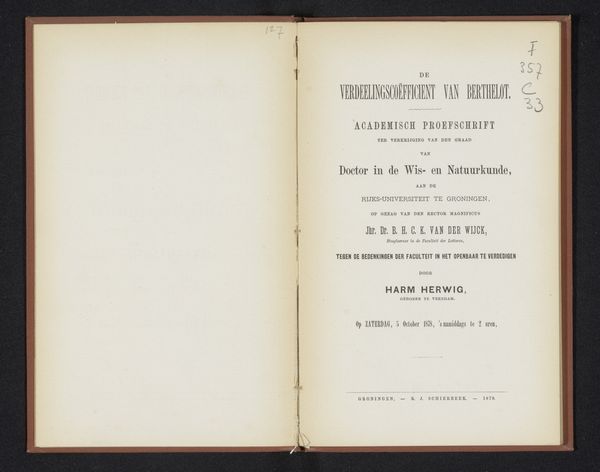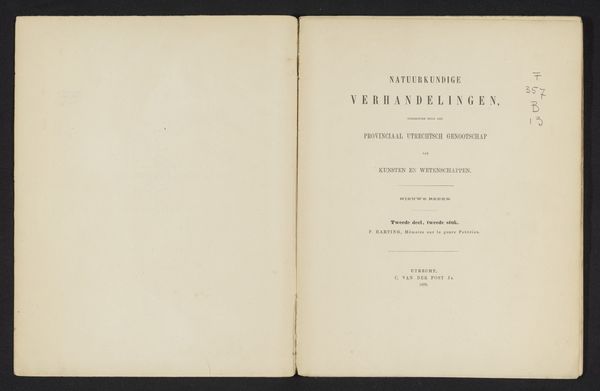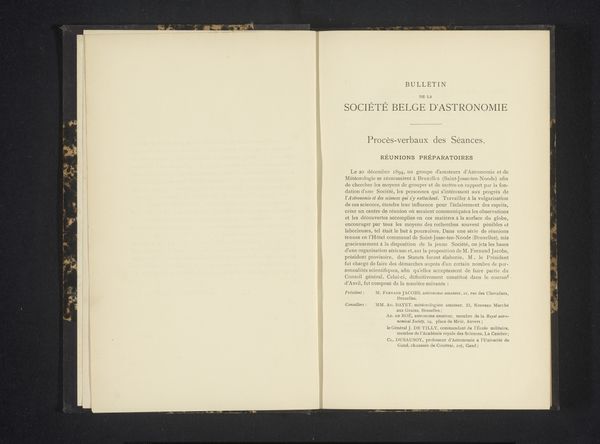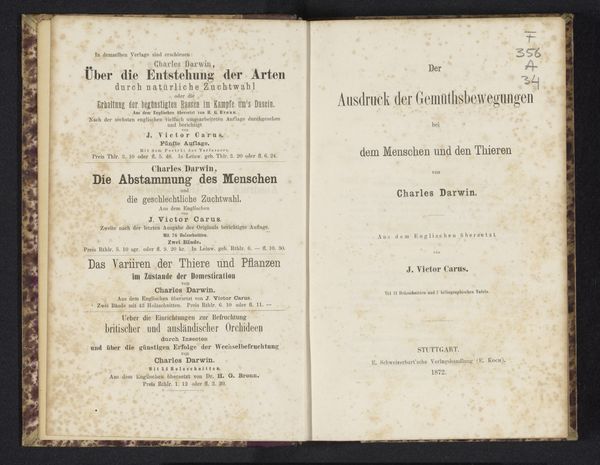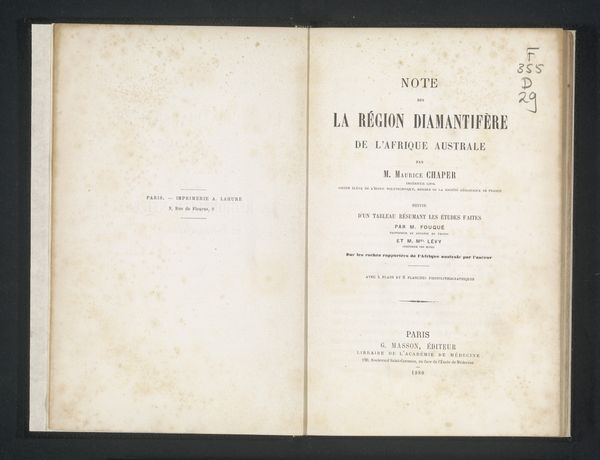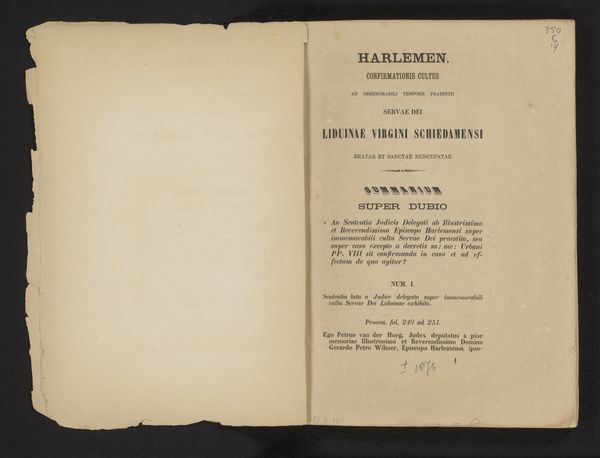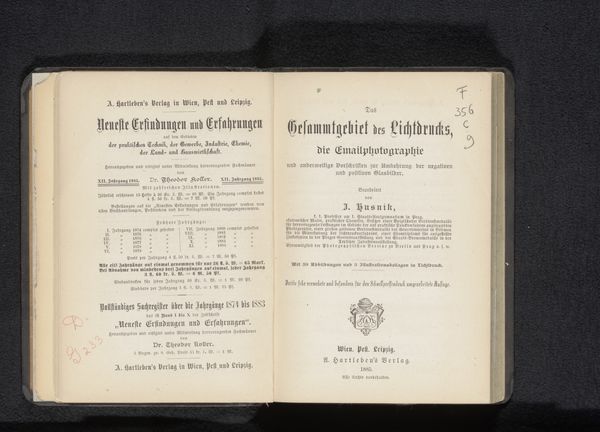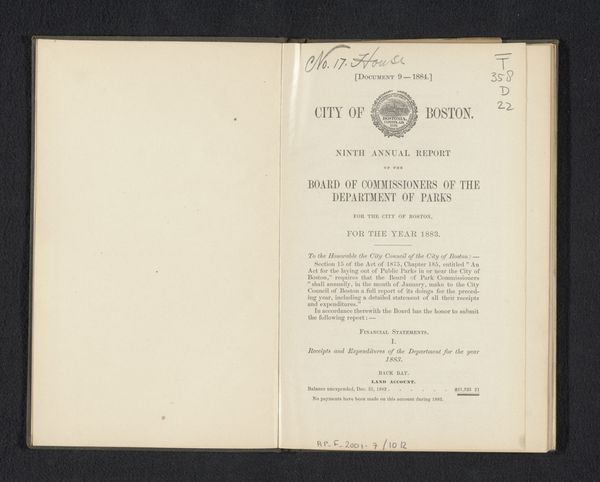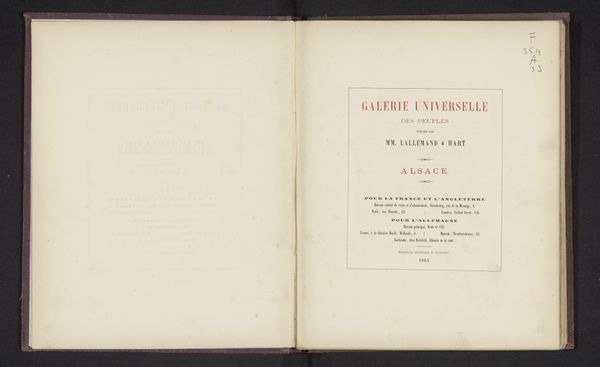![Untersuchungen über Mikrostrukturen des erstarrten Schwefels nebst Bemerkungen über Sublimation,... [etc.] by Otto Bütschli](/_next/image?url=https%3A%2F%2Fd2w8kbdekdi1gv.cloudfront.net%2FeyJidWNrZXQiOiAiYXJ0ZXJhLWltYWdlcy1idWNrZXQiLCAia2V5IjogImFydHdvcmtzL2Y5NGVlZDg1LTM3MGItNDk1Yi04Zjk3LWViZWI3Nzk0MWUyZS9mOTRlZWQ4NS0zNzBiLTQ5NWItOGY5Ny1lYmViNzc5NDFlMmVfZnVsbC5qcGciLCAiZWRpdHMiOiB7InJlc2l6ZSI6IHsid2lkdGgiOiAxOTIwLCAiaGVpZ2h0IjogMTkyMCwgImZpdCI6ICJpbnNpZGUifX19&w=3840&q=75)
Untersuchungen über Mikrostrukturen des erstarrten Schwefels nebst Bemerkungen über Sublimation,... [etc.] 1900
0:00
0:00
graphic-art, print, typography
#
graphic-art
# print
#
typography
#
academic-art
#
modernism
Dimensions: height 315 mm, width 239 mm, thickness 10 mm
Copyright: Rijks Museum: Open Domain
Editor: Here we have "Untersuchungen über Mikrostrukturen des erstarrten Schwefels," from 1900, by Otto Bütschli. It's... a title page, really, or maybe the frontispiece to a scientific publication. It feels very formal and of its time. What's your take on this, considering its historical context? Curator: Well, seeing this brings to mind the intersection of science, print culture, and emerging Modernism at the turn of the century. The rigid typography and formal layout reflect the institutional authority and supposed objectivity of scientific inquiry. The very act of publishing this, of disseminating microscopic observations to a wider audience, was a key part of building scientific knowledge and its influence in society. What does "academic art" mean in relation to this, I wonder? Editor: So, this kind of typography and layout are tied to specific ideas about what "knowledge" looks like? It’s not just neutral? Curator: Precisely. Consider the power dynamics: who had access to scientific tools, who could publish, and whose voices were amplified? This document, in its materiality, encodes those structures. It reminds us that even the pursuit of scientific “truth” is embedded in social and political contexts. Does the German language affect the text and its impact here? Editor: Good question! Perhaps it speaks to a specifically German-speaking scientific community at the time. Thinking about it that way really opens up new avenues for interpretation. I see a complex picture here. Curator: Indeed. By examining the visual presentation, we gain insight into how science asserted its position within the broader cultural landscape. Hopefully, listeners will see how an everyday object becomes quite loaded in its historical context.
Comments
No comments
Be the first to comment and join the conversation on the ultimate creative platform.
